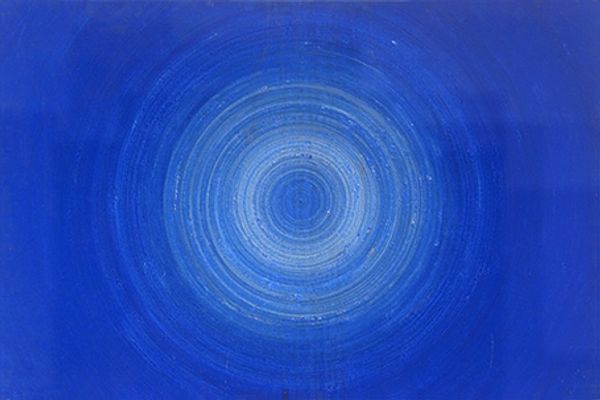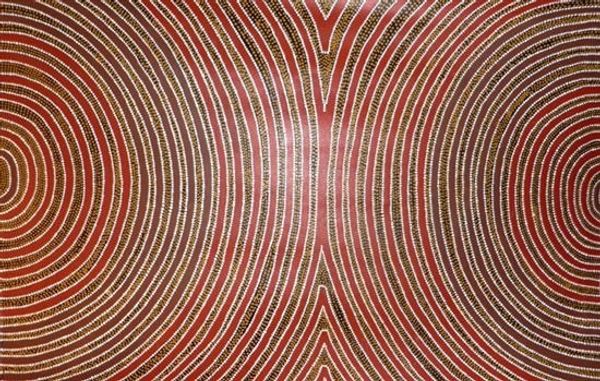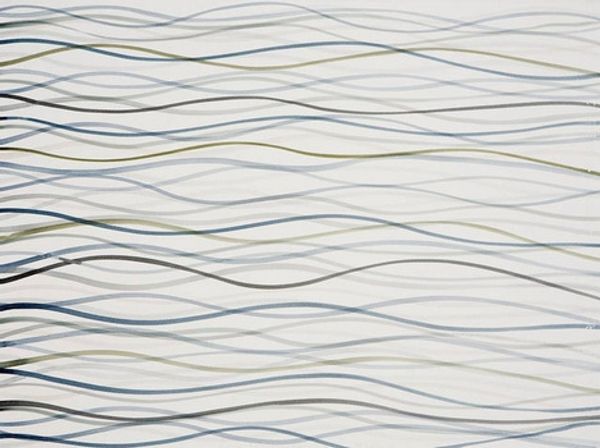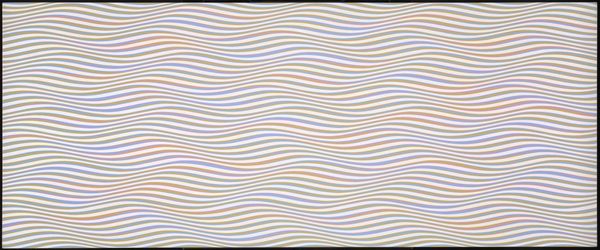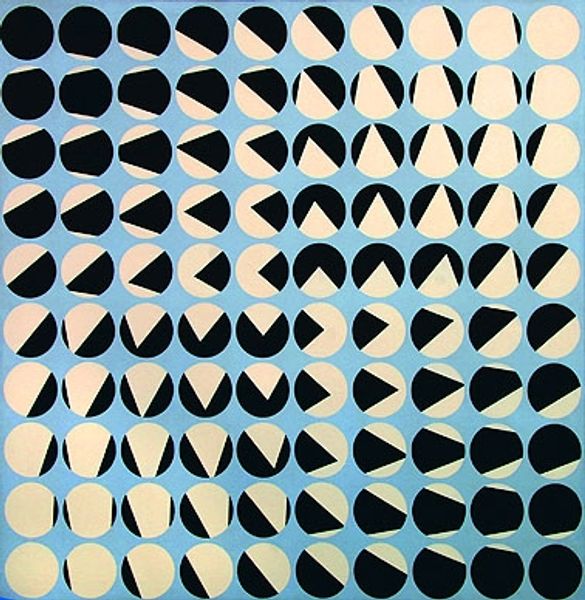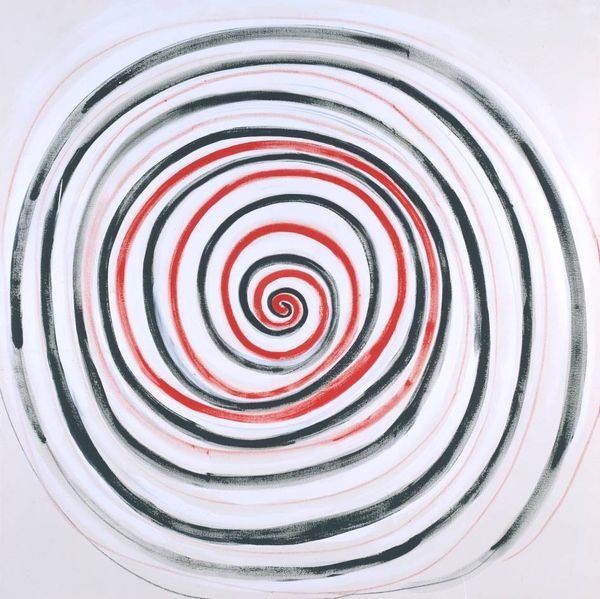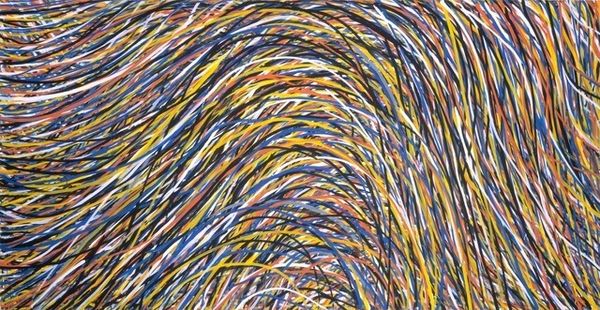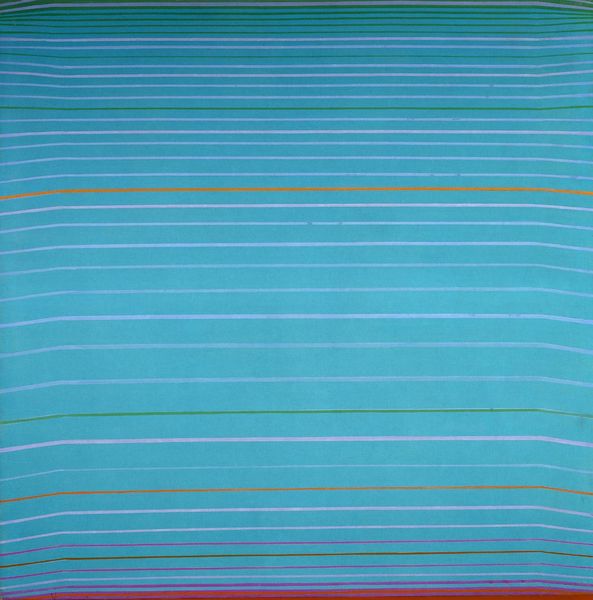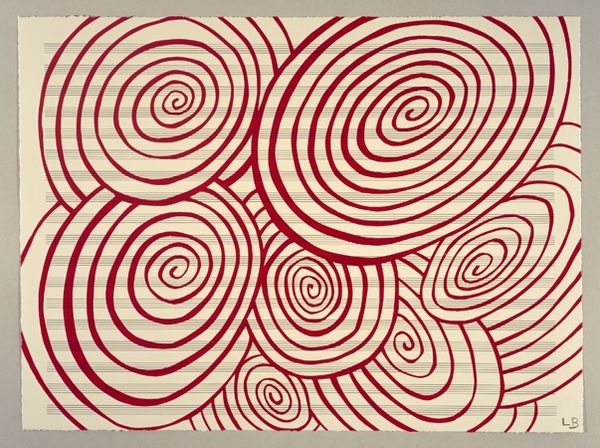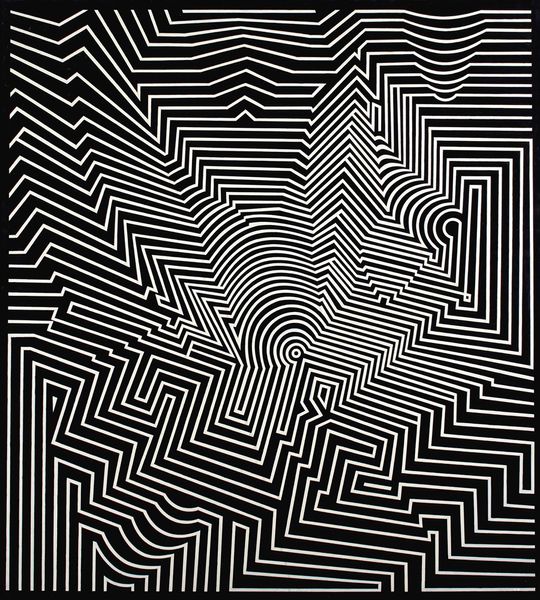
painting, acrylic-paint
#
organic
#
painting
#
acrylic-paint
#
geometric pattern
#
abstract pattern
#
organic pattern
#
abstraction
#
line
#
pattern repetition
#
indigenous-americas
Copyright: Abie Loy Kemarre,Fair Use
Editor: We're looking at Abie Loy Kemarre's "Sandhills (Blue)," created in 2005 with acrylic paint. The rhythmic blue and white lines create an almost dizzying effect. How would you interpret this piece in its broader context? Curator: It’s a great example of contemporary Indigenous Australian art and its evolving relationship with the global art market. These "Sandhills" paintings, based on the artist's ancestral lands, became highly sought after in the early 2000s. One must consider how this popularity may have influenced the painting style itself, almost adapting to what a Western audience expected from Indigenous art. Do you see this adaptation in the rhythmic abstraction? Editor: I guess I hadn’t thought of it as something influenced by market pressures, but more as just, well, an abstraction of landscape. Curator: Exactly. That's one reading, but it is crucial to understand the role of galleries and collectors in shaping such narratives. Kemarre comes from a lineage of women artists, but her rapid rise to prominence invites questions about what cultural stories are being emphasized, and for whom? Were there political reasons for promoting artworks related to landscapes and mapping of lands in the early 2000s? Editor: So, it's less about the aesthetic qualities and more about how it participates in socio-political dialogues? Curator: The two are never separate, right? Especially when dealing with artwork that is from a culture so different than what's common in the contemporary western art market. We cannot appreciate Indigenous art without also examining the art world that commodifies them. I find it refreshing when such patterns serve as both aesthetic beauty and complex conversation starters. What do you think about how institutions showcase Aboriginal art? Editor: This gives me so much to think about regarding the representation and reception of Indigenous art in a global context! Thanks for highlighting the crucial role that galleries and museums play.
Comments
No comments
Be the first to comment and join the conversation on the ultimate creative platform.
